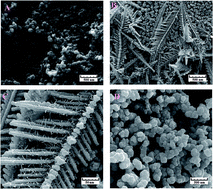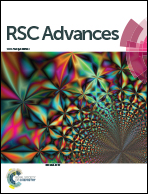Electrooxidation of glycerol on nickel and nickel alloy (Ni–Cu and Ni–Co) nanoparticles in alkaline media
Abstract
In the present study, nickel (Ni) and Ni alloy (Ni–Cu and Ni–Co) nanoparticles modified carbon-ceramic electrodes (Ni/CCE, Ni–Cu/CCE and Ni–Co/CCE) were prepared by an electrochemical process for the oxidation of glycerol. In order to obtain the surface and physicochemical information, the Ni/CCE, Ni–Cu/CCE and Ni–Co/CCE were investigated by scanning electron microscopy, energy dispersive X-ray spectroscopy, X-ray diffraction and electrochemical techniques. Then, cyclic voltammetry and chronoamperometry were employed to characterize the electrocatalytic activity of the modified electrodes, Ni/CCE, Ni–Cu/CCE and Ni–Co/CCE, toward the oxidation of glycerol in 1.0 M NaOH solution. It was found that the Ni alloy nanoparticle modified electrodes are catalytically more active than the Ni/CCE, therefore, the alloying of the Ni with Cu and Co in the form of nanoparticles on the carbon-ceramic electrode, as a homemade substrate, greatly enhances the catalytic activity of the Ni-based electrocatalysts (as the non-platinum electrocatalysts) in glycerol oxidation.


 Please wait while we load your content...
Please wait while we load your content...